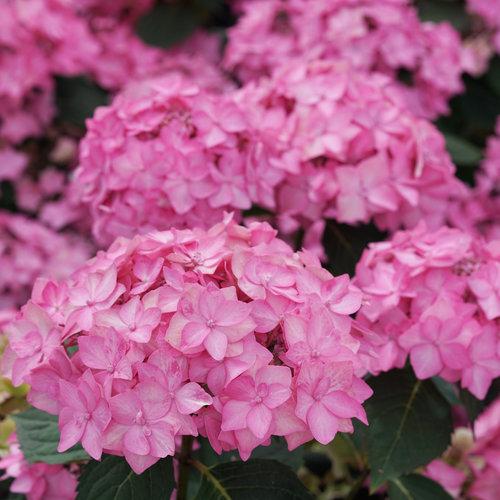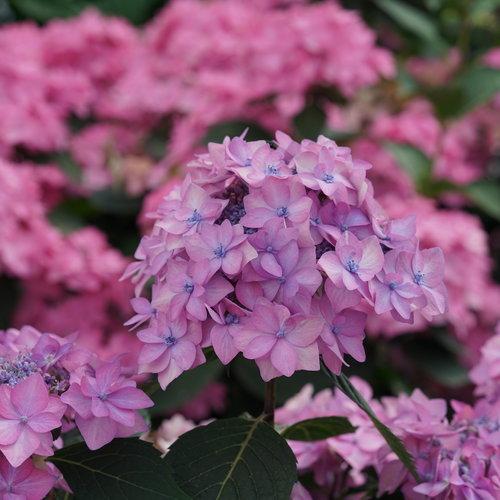« Previous Plant | Next Plant »
Hydrangea mac. subsp. serrata Let's Dance Can Do® ('SMNHSI')
Let's Dance Can Do® Reblooming hydrangea: Patent PP32548
- » Reblooming
- » Elegant lacecaps flowers
- » Unique ability to create flower buds on entire length of stem

- Category:Shrub
- Breeder:Proven Winners
- Hardiness Zone:5-9
- Height:36-48 in
- Spread:36-37 in
- Bloom Color: Blue Shades, Pink Shades, Purple Shades
- Foliage Color: Green Shades
Not just another pretty face!
One look at Let's Dance Can Do hydrangea tells you it's beautiful - but there's more to this innovative new hydrangea than that. It has the unique ability to create flower buds along the entire length of the stem instead of only at the top like other big-leaf hydrangeas. That means that even if winter does its worst and kills back a portion of the plant, there will still be flower buds to open in early summer. Let's Dance Can Do also reblooms quicker than others: in other words, you won't have to wait until fall to see the new flowers. And about those flowers! They are lacecaps, but the size and quantity of the showy sterile florets obscures the tiny fertile florets. Flowers are a luscious strawberry pink in neutral/alkaline soils and a lovely lavender in acidic ones.
If you've been reluctant to try a big-leaf hydrangea, or been disappointed in others, Let's Dance Can Do hydrangea is the perfect place to start. Available in better garden centers in spring 2021.
30 Seconds with Let's Dance Can Do!™
Attributes
| • | Border or Bed |
| • | Cut Flower/Foliage |
| • | Dried Flower/Foliage |
| • | Focal Point |
| • | Reblooming |
| • | Specimen |
Foliage Color
| • | Green |
Maintenance and Care
| • | Salt Tolerant |
Programs
| • | Proven Winners |
Season of Interest (Flowering)
| • | Summer Bloomer |
Habit
| • | Mounding |
Growing & Maintenance Tips for Hydrangea mac. subsp. serrata Let's Dance Can Do®
Soil and exposure: Big-leaf hydrangeas should be planted in moist but well-drained soil - they cannot tolerate wet conditions. It's a good idea to have a 2-3" layer of mulch in all climates. Plant with at least some sun each day; the hotter your climate, the more shade the plant can withstand.
Pruning: big-leaf hydrangeas cannot be pruned at any point in the year without negatively impacting the flowering. As such, it's best to avoid pruning this type of hydrangea altogether. If portions of the plant were damaged from winter weather, they can be removed in spring when it is clear where the new growth is emerging.
Fertilizing: The key to getting reblooming hydrangeas to produce new-wood flower buds is to keep them growing vigorously all summer. Hence, fertilizer can be beneficial. Apply a granular rose fertilizer in early spring, when the ground has thawed, and again in late spring. Never fertilize after late July; that can interfere with the plant going dormant.
Color: The "default" color for big-leaf hydrangeas tends to the pink/red tones, and that is the color they will display in neutral (pH 7.0) or higher soil. The soil must be acidic (at least 6.5 or so) for the blue color to develop, and aluminum, a naturally occurring soil mineral, must be present. If you are not satisfied with the flower color in your yard, get a soil test so that you know exactly what must be changed. We do not recommend applying any kind of treatment "just in case" - that's a waste of time and money, and could potentially lead to pollution or create inhospitable conditions in the soil.

